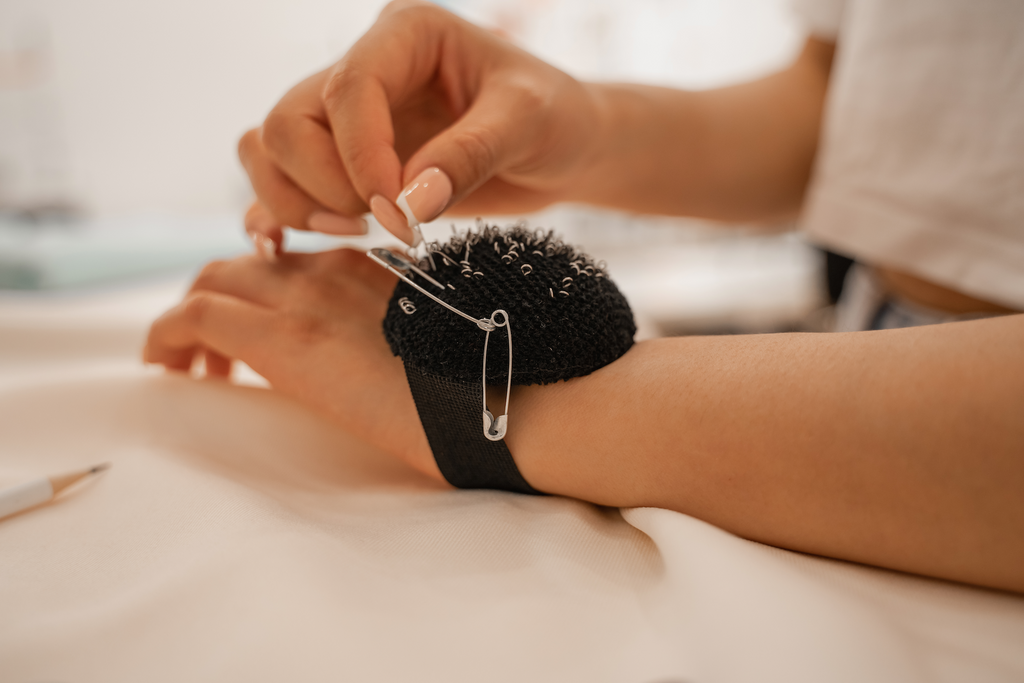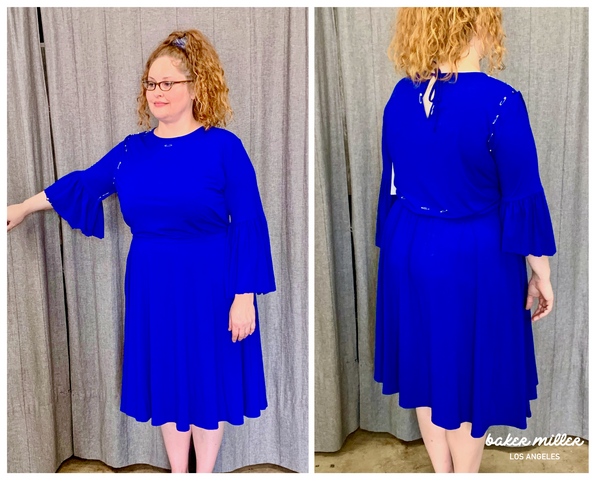
Once a garment sample has been sewn, what next? It is time to fit the sample on a model. Through fit testing, we ensure our garments will meet our high expectations of quality and fit.
Fitting is critical as it is a chance to see how our garments look and fit on a live body. Fit testing allows you to find the flaws and fix them from the beginning. Our fit model has the same measurements as our sample size (18/20, 2X).
Fit models aren’t like runway or editorial models you associate with fashion, but they are equally important. We found our model through a local modeling agency focused on fit models.
Our fit model has years of experience fitting clothes for plus-size brands, which is very helpful. Unlike a mannequin, fit models allow you to see how clothes move and offer feedback if something doesn’t fit or feel right.
Our fit model told us everything we needed to know about how the garment should fit. She informed us whether the armhole was too tight, the waist was too loose, the pockets were not deep enough, etc. We went through the entire dress, from top to bottom, and corrected everything.
Here are photos from one of our fit sessions. As you can see from the pins, we spent a lot of time getting a comfortable fit in the upper arms. We also worked on getting the sleeve length just right.
The fit testing required several rounds of sessions with our development house and fit model for each of our dresses. At each fitting, we found adjustments that had to be made. Our technical designer was in attendance for each fitting. The pattern was adjusted every time the fit was adjusted to reflect the changes. A new sample was made incorporating those changes, and the process was repeated until the fit was perfect and the way we imagined.
Throughout sample making, we also had non-models, women of different sizes and shapes, try our dresses and give us more general fit feedback.
This gave us additional perspective on fit and understanding the changes we needed to make.
Final sample
The final sample needed was our production sew-by sample. The production team will use this, along with our tech pack, as a guide to making our garments. We had to ensure the sew-by sample was perfect and appeared exactly how we wanted it to look.
This sample increases the quality of our production run and holds our manufacturer accountable for executing our designs as specified.
Pattern Grading
Once the fit is perfect, the technical designer scales the base size (in our case, 18/20, 2X) up or down, to all the various sizes we offer, in a process known as grading.
This system increases or decreases the size based on an average difference between sizes. This is how we took a one-size sample and then created multiple-size versions of it.
Samples are the heart of apparel production. The development process, if done correctly, will result in a garment that fits properly and is made well. You don’t want the manufacturer to assume or guess how the garment should look. Accuracy throughout the development process is so crucial.
While a long process, sample making is one of the most exciting parts of development. Bringing our ideas to life and seeing actual garments on a live body is so satisfying after months of designing and fabric sourcing.
Now it’s on to production!

